One thing that struck me while walking around the RTJ II designed Castle Course at Bro Hof (Sweden), was the number of drainage outlets on the course. I had never before seen these "perforated man-holes" on a golf course, and wondered why a course that cost millions would need them.
I did a search of the DG on drainage and found several discussions had taken place concerning catch basins. Having read some of those topics, I still can't understand why there are so many on this course. In some places, it's like the footpath of a new housing estate, where you have a concentration of man-holes, telecomm, gas, and electricity outlets. In some of the pictures below (picture quality is not great, as it was a very dull day), these metallic caps are in the middle of level fairways, not in hollows or depressions.
The course lies on fairly flat land within a few hundred yards of Lake Mälaren. This part of Sweden doesn't get too much rain, when you compare it to somewhere like Ireland. In the Summer, it can get pretty hot here but there can be some heavy downpours as well. These fixtures do not extend the golfing season in comparison to other courses in the area. The neighbouring course at Bro-Bĺlsta has no catch basins and yet stays open even longer in the Winter than Bro Hof.
Are these ugly eyesores now an accepted fixture on modern golf courses?
Dónal.
 1st Hole:
1st Hole: Do I get relief?
Here's one at the front left of the 1st green at Bro Hof Castle Course. It lies at the bottom of a slope, and many shots that are short may come to rest on this. What is the rule governing this?
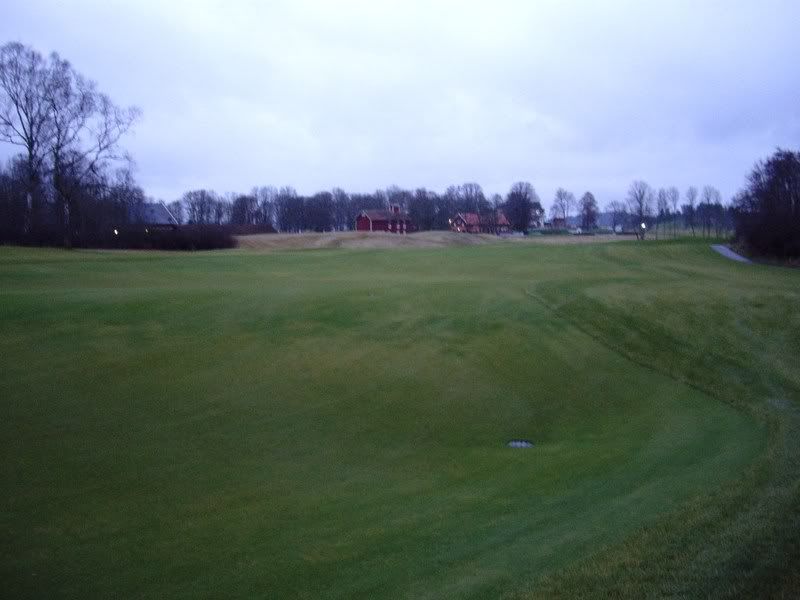 1st Hole:
1st Hole: This one is in a small depression on the left side of the fairway.
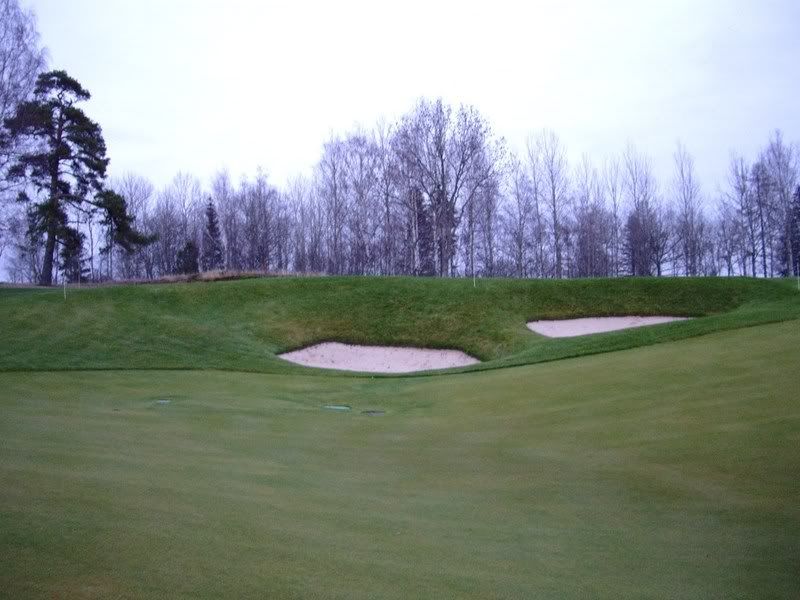 2nd Hole:
2nd Hole: Short of the green. Is this really necessary? Three different fixtures side by side.
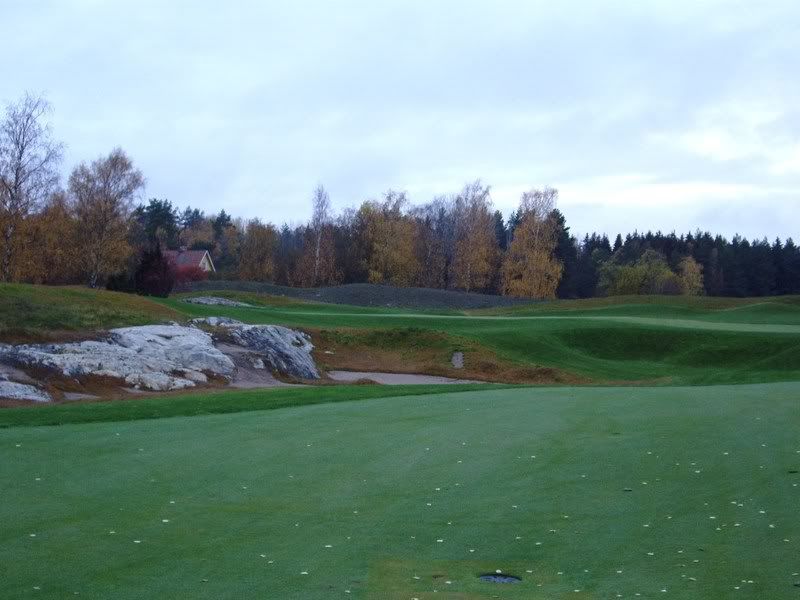 13th Hole:
13th Hole: This one lies in the middle of the fairway
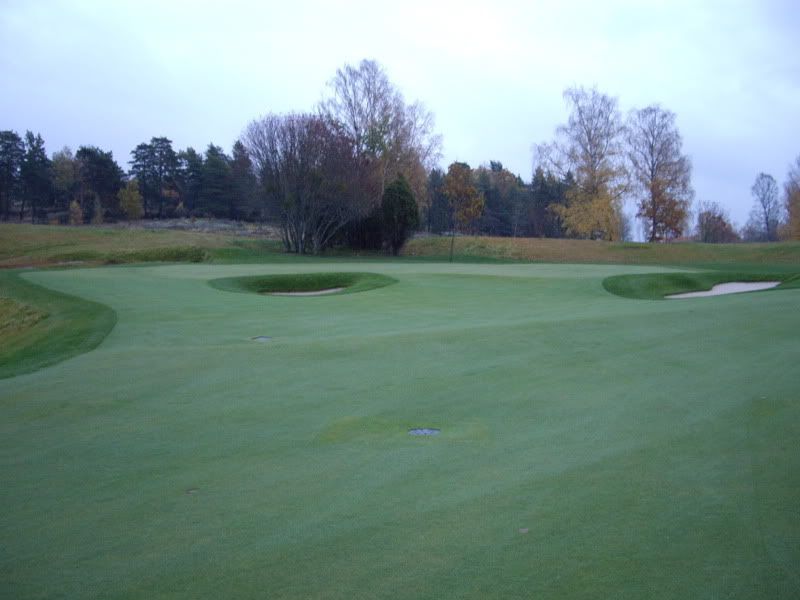 14th Hole:
14th Hole: Approaching the green.
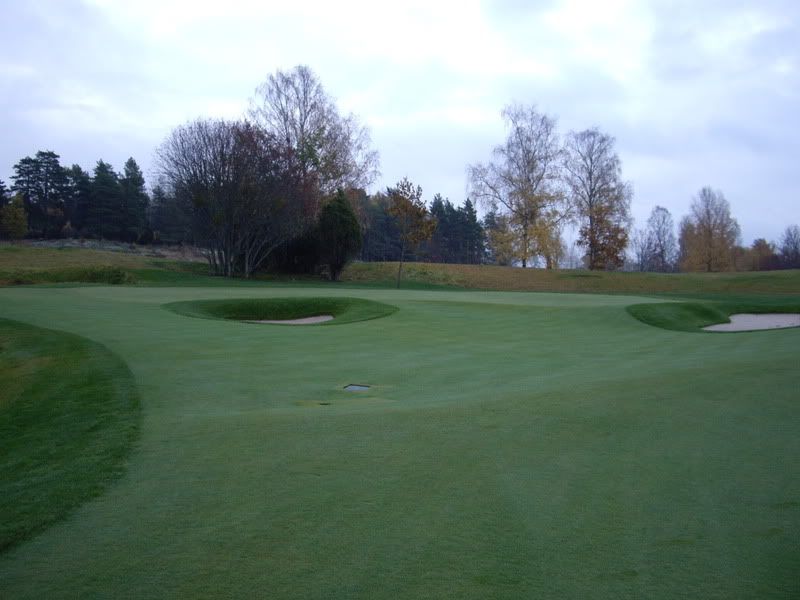 14th Hole:
14th Hole: Another cap of some sort.
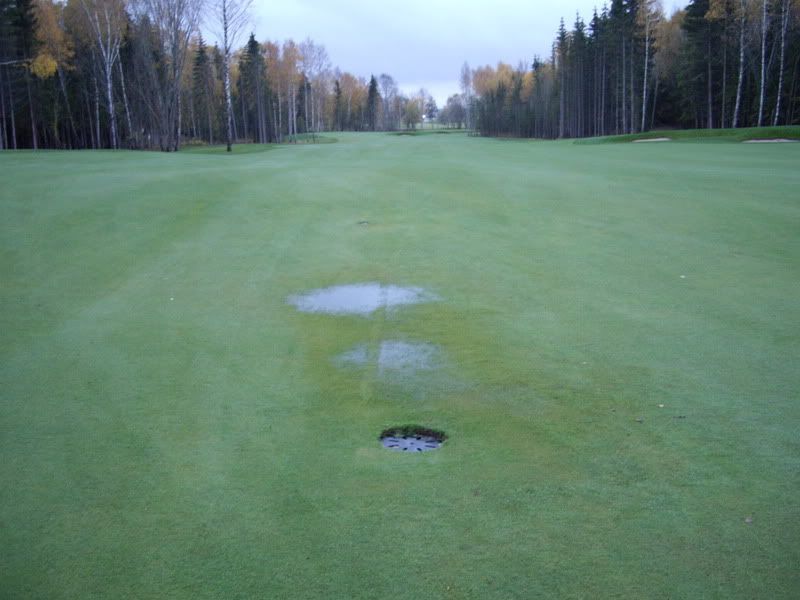 15th Hole:
15th Hole: No denying that this one is needed! Shabby job?
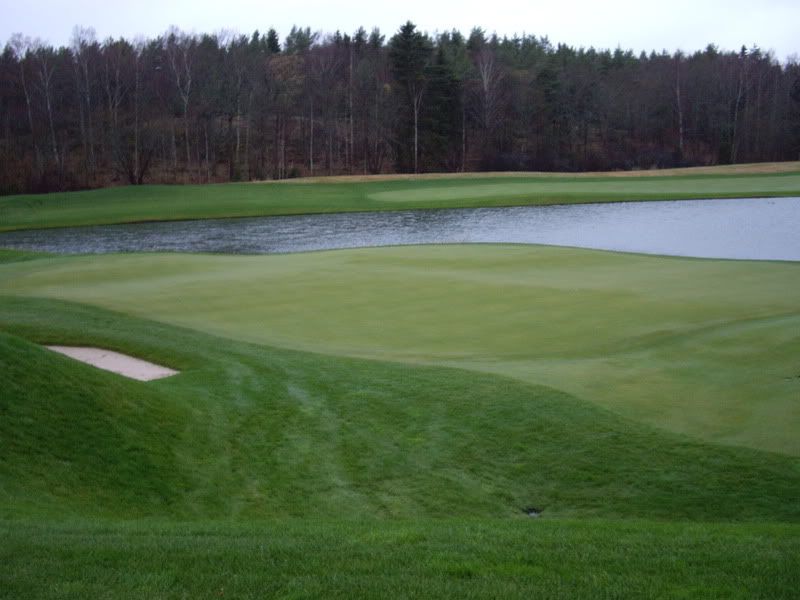 Left of the 17th green.
Left of the 17th green.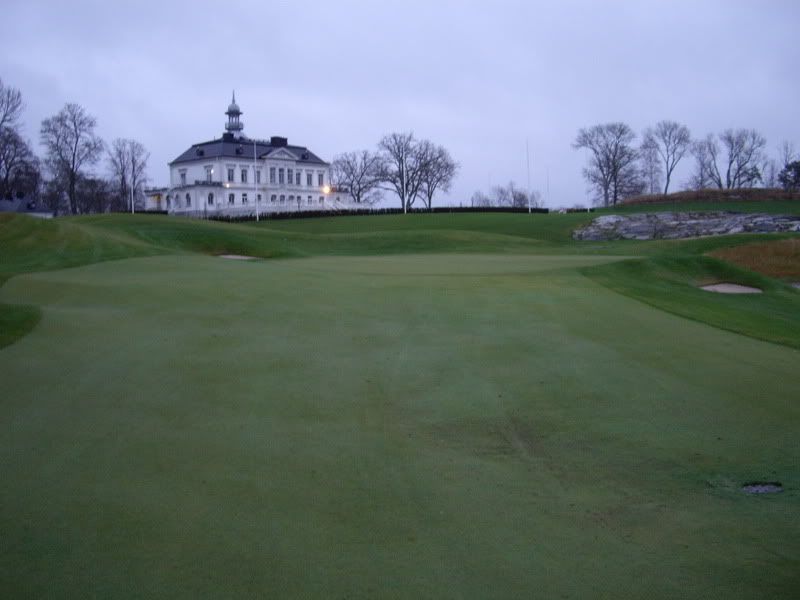 Short right of the 18th green:
Short right of the 18th green: Nice Clubhouse!